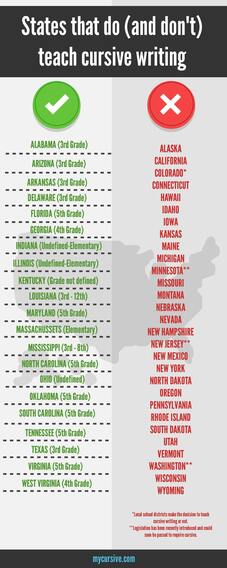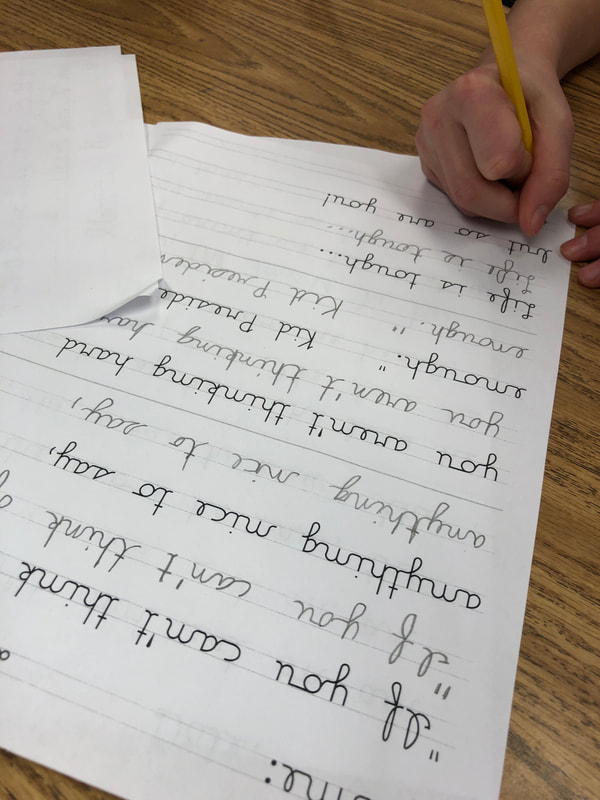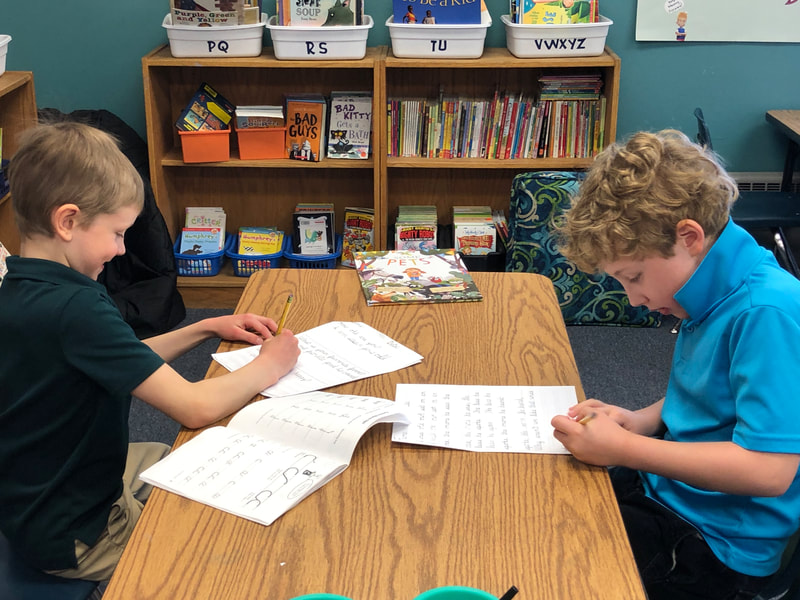| According to a recent survey, only 21 states are requiring their students to learn cursive. While this is not surprising, as current educational focus has shifted to skills more aligned with technology, there are opportunities being missed with the disappearance of cursive instruction.
An article from the We are Teachers website entitled “Research Shows Huge Benefits to Learning Cursive, but Most States Don’t Require It” identifies four main benefits for students who study cursive. Brain Development |

https://mycursive.com/the-14-states-that-require-cursive-writing-state-by-state/ |
According to William Klemm, senior professor of neuroscience at Texas A&M University, “Handwriting (cursive writing) dynamically engages widespread areas of both cerebral hemispheres.” These studies lead to the idea that the brain is growing and stretching more during cursive instruction, as more parts of the brain are being stimulated.
Results of a study by the University of Washington show that while learning to print and type also contribute to brain growth, instruction in cursive appears to produce the greatest neurological benefit.
Mental engagement
Handwriting in general requires focused attention on not only the structure of each letter, but how to transfer that knowledge into a physical representation on paper. As with most things, students learn and retain information better as they physically re-create it.
Kinesthetic benefits
Fine motor skills and hand-eye coordination are required as students write in cursive, building important muscle memory. These honed skills transfer over to other areas of a child’s life, such as sports or playing music. Visual and tactile processing skills are also being strengthened with students write in cursive.
Benefits for students with learning disabilities
A 2012 review suggests that cursive may be particularly effective for individuals with certain neurological disorders. Cursive helps students with dyslexia by stimulating both sides of the brain. Students with dysgraphia. may find the connected letters and fluid writing motions of cursive writing help in aiding their motor control challenges during writing.
At PNA we utilize the handwriting curriculum Handwriting Without Tears, beginning with print in preschool and beginning cursive in 2nd grade. Every year, without fail, the second graders are eager and excited to learn cursive. They take it very seriously, intently working with grit and overcoming frustration as they practice. While they see it as a rite of passage in “being the big kids”, we recognize the benefits of cursive instruction and take the time to carve out a spot for it in our busy academic days.




